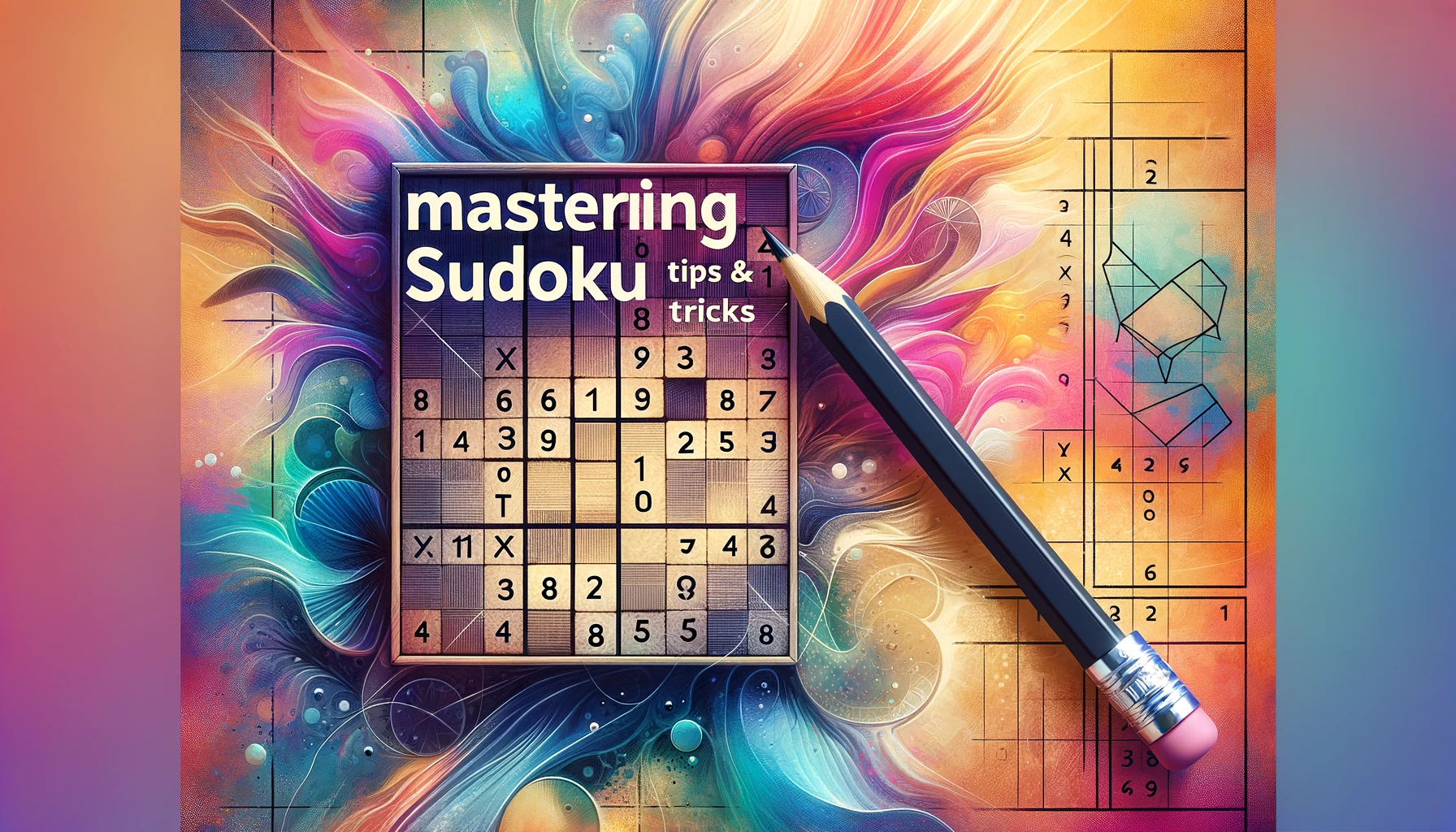Sudoku! The ancient Japanese art of number placement that has managed to make its way into our daily newspapers, right beside the horoscopes that promise you’re going to find love or win the lottery this week (still waiting on both). But unlike the ambiguity of the stars, Sudoku, my friend, is black and white — literally. And with these insider secrets, you too can impress your friends, or at least avoid tearing your hair out. So, sit down, grab a pencil (because if you’re human, you’ll make mistakes), and let’s dive deep into the sophisticated world of Sudoku.
1. Understand the Rules. Seriously.
First things first, if you’ve never played Sudoku or think it’s some form of martial arts, you need to know the basics. The game consists of a 9×9 grid, divided into 3×3 boxes. You’re tasked with filling every row, column, and box with numbers from 1 to 9, without repeating any numbers within those rows, columns, or boxes. Sounds simple, right? And yet, here we are, desperately trying to figure it out. But don’t worry, that’s what this guide is for.
2. Scan Like a Hungry Hawk.
Before diving in like a toddler with a crayon, take a moment. Scan the puzzle. Look for rows, columns, or boxes that already have a lot of numbers filled in. This will give you a clue where to start. Oh, and remember, just like in life, it’s okay to go after the low-hanging fruit first. Fill in the easy numbers and let that boost your ego before the real challenge begins.
3. Penciling In: Not Just for Tattoo Artists.
Let’s say you’re eyeing a particular box and think, “Hmm, maybe a 4 goes here.” Instead of committing like it’s a lifelong relationship, use the pencil. Write small possible numbers in the corners of the boxes. When you’re confident about a number, then — and only then — should you ink it in. And just like that, you’re one step closer to being a Sudoku master.
4. Use the Process of Elimination.
Remember high school math? Me neither. But, one thing we can recall is the process of elimination. If you see that a number can only possibly fit in one box within a row, column, or 3×3 grid, then congratulations! You’ve found its home.
5. Avoid Guesswork – Unless You’re Feeling Lucky.
You might think, “Ah, I’ll just guess and if it’s wrong, I’ll erase it.” But Sudoku is a game of logic, not luck. Though, if you’re the gambling type, go ahead, roll the dice, and take that 50/50 shot. But if you’re not keen on wiping away eraser shavings or realizing halfway through that you’ve messed up everything, it’s best to stick with a systematic approach.
6. Twins, Triplets, and Quads – Oh My!
Have you ever noticed two numbers in a row, column, or 3×3 box that can only go in two particular cells? These are called ‘naked pairs’. And if you spot them, you’re onto something! The same goes for sets of three or four numbers. The logic here is that if, for example, two numbers can only go in two particular cells, then those numbers can’t go anywhere else in that row, column, or box. This means you can eliminate those numbers from other cells. And who said twins weren’t fun?
7. Crosshatching – Not Just for Sketch Artists.
For those of you with an artistic streak, you’re going to love crosshatching. Here’s the idea: if you’re looking for where to place a certain number, look across rows and columns to see where it already exists. By ‘crosshatching’, you can identify which 3×3 boxes the number can’t go in, narrowing down your choices. Before you know it, that elusive number will have only one place to be!
8. Count Like You’ve Never Counted Before.
Sometimes, you just need to go back to basics. Start with the number 1 and see if there are any obvious places to put it in each grid. Then move to 2, then 3, and so forth. This method can sometimes break a deadlock in your puzzle-solving journey. Yes, it might be tedious, but hey, weren’t you the one who picked up the Sudoku in the first place?
9. Keep Your Cool.
Okay, so you’re fifteen minutes deep and feel like you’re staring at the Matrix. Everything’s blurring together. DON’T PANIC. Stand up, take a breather, sip on your overly priced latte, or maybe take a walk. Clearing your head can give you a new perspective on the puzzle. Or, you know, remind you that you chose to spend your leisure time doing math for fun.
10. Embrace the Mistakes.
Look, nobody’s perfect. If you find you’ve made a mistake, it’s not the end of the world. Mistakes help you learn. Remember that every wrong turn can potentially lead you to the right path — or at least to a very educational dead end. So when you find that pesky number out of place, instead of cursing the Sudoku gods, laugh it off, backtrack, and try again.
In conclusion, dear aspiring Sudoku master, while this ancient number game might at times seem like a cruel joke designed to make you question your intelligence, with persistence and a bit of strategy (and maybe some humor), you can conquer it. And if you don’t? Well, there’s always the next one. Or maybe just stick to the horoscopes. Who knows, maybe tomorrow’s stars promise better Sudoku skills!
Tips to Solving Sudoku Like a Pro
- Look for Unique Candidates
Sometimes a particular number can only go in one spot within a row, column, or box, even if it’s not immediately obvious. This is called a ‘hidden single’. By systematically checking each number, you can often find a spot where a certain number must go, even though it’s not the only candidate in its cell.
- X-Wing Strategy
This advanced technique is for when you have two rows (or columns) that each contain only two possible cells for a certain number, and these cells line up exactly across the grid. This alignment means you can eliminate that number from the rest of the row or column, as it must appear in one of those two spots in each row or column.
- Coloring Chains
A bit more complex, this involves ‘coloring’ two connected groups of cells that could contain a specific number, with each group being a different color. If you find that a number in one color group makes another number in the same group impossible, you can eliminate that number from both groups.
- Swordfish Pattern
Similar to the X-Wing but involving three rows and columns instead of two. If you can find three rows (or columns) where a number can only go in three columns (or rows) and these line up, you can eliminate that number from the other cells in those columns (or rows).
- Practice Reverse Thinking
Instead of always thinking about where to place a number, sometimes think about where a number can’t go. This reverse thinking can often open up new possibilities and solutions that weren’t initially apparent.
- Advanced Pairs and Triples
Beyond naked pairs and triples, look for ‘hidden pairs and triples’ – where only two or three numbers can go in two or three cells in a row, column, or box, but they’re not the only candidates in those cells. Identifying these can help you make significant progress in tougher puzzles.
History of Sudoku
Sudoku, as it is known today, was not originally a Japanese invention, although its popular name and the version most people are familiar with were indeed developed in Japan. The game’s origins can be traced back to an 18th-century Swiss mathematician, Leonhard Euler, who created something called “Latin Squares.” Latin Squares are grids where each row and column contain each element exactly once.
The modern Sudoku puzzle, with the specific 9×9 grid with 3×3 regions where each row, column, and region must contain all the numbers from 1 to 9 without repetition, was designed by Howard Garns, an American architect, and first published in 1979 under the name “Number Place” in Dell Magazines.
It was later introduced in Japan in 1984 by the puzzle company Nikoli, under the name Sudoku, which is a short form for “Sūji wa dokushin ni kagiru” (数字は独身に限る), meaning “the digits must be single” or “the digits are limited to one occurrence.” The significant contribution from Japan, specifically from the company Nikoli, was not in altering the fundamental rules or the grid structure, but rather in popularizing the game under the name “Sudoku” and contributing to its spread worldwide. Nikoli also introduced some additional rules, like limiting the number of provided numbers or “givens,” which increased the puzzle’s complexity and appeal.
The game gained worldwide popularity in the early 21st century after being published and promoted in various newspapers and magazines around the globe. So while the concept of a number puzzle with a grid structure has roots in European mathematical theory and the modern structure of the Sudoku puzzle was an American innovation, the specific format and name of Sudoku as we know it today were popularized in Japan.
FAQs about Sudoku
Sudoku is fundamentally a game of logic and deduction. Guesswork is not recommended as it can lead to errors and frustration. The strategies outlined in the article aim to eliminate the need for guessing by providing logical ways to deduce the placement of numbers.
If you’re stuck, try looking at the puzzle from a different perspective. Review the advanced techniques like X-Wing or Swordfish patterns, or take a break and return with fresh eyes. Sometimes, stepping away for a short period can provide new insights when you return.
Practice is key to improving at Sudoku. Start with easier puzzles and gradually work your way up to more difficult ones. Also, try to learn and practice different strategies, as this will give you more tools to solve various types of puzzles.
Properly designed Sudoku puzzles have only one unique solution. If you find multiple solutions, it’s likely that the puzzle was not constructed correctly.
Using a pencil is highly recommended, especially for beginners. It allows you to make tentative moves and easily correct mistakes without cluttering the puzzle.
Yes, there are many digital tools and apps available that can assist in solving Sudoku puzzles. These tools can provide hints, check for errors, and even solve the puzzle for you. However, relying too much on these tools can hinder your ability to develop your own solving skills.
There’s no mandatory order, but a common approach is to start with the numbers that appear most frequently in the puzzle, as they often provide more immediate opportunities for placement.
The time it takes to solve a Sudoku puzzle can vary greatly depending on the puzzle’s difficulty and the solver’s experience. Beginners might take longer, whereas experienced solvers can complete puzzles much faster.
Sudoku puzzles can help improve concentration, problem-solving skills, and logical thinking. They are also a great mental exercise to keep the brain active, which can be beneficial for mental health.
If you find an error, try to trace your steps back to where you might have gone wrong. Use a pencil to make corrections. Remember, making mistakes is a part of the learning process in Sudoku.



